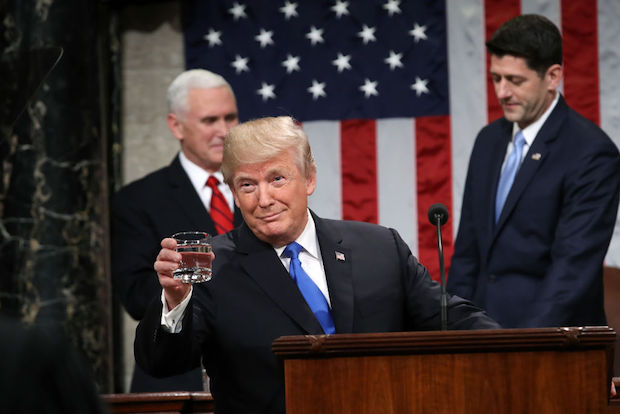Sometimes as an investor, you wish your Prime Minister or President would keep their thoughts to themselves. Perhaps hold off on that keynote speech about Brexit? Brush over that State of the Union address?
Why? You may ask. Because it plays havoc with your investment strategy, that’s why. And I don’t think the likes of Theresa May and Donald Trump realise what they might be doing to someone’s investment portfolio.
The research from spread-betting firm ETX Capital shows that large fluctuations in the value of the pound can be seen after Mrs May’s speeches.
 Source: ETX Capital
Source: ETX Capital
Last year, the pound was weak against a basket of currencies, including the euro and dollar. But it is debatable whether this is solely due to Theresa May’s speech-making abilities, or more to do with the volatile nature of the US Presidency and the ongoing Brexit negotiations.
Neil Wilson, Senior Market Analyst at ETX Capital says:
‘Theresa May’s speeches outlining her government’s approach to Brexit clearly have a big impact on the pound’s short-term movements. But longer term her words matter less than what’s happening on the ground in the Brexit negotiations.
‘Furthermore, the biggest impact on the pound is the relative performance of its two biggest peers – the dollar and the euro. The dollar was sliding all [last] year against its major peers, giving a lift to sterling. Meanwhile the euro has rallied for most of 2017 as the ECB moved closer to unwinding its giant stimulus package, leaving the pound trailing against the single currency.’
KEY EVENTS
Announcement of Premiership: July 13 2016
The week after the UK voted to leave the EU, the pound hit 31-year lows against the dollar – but by the announcement of Theresa May’s premiership, it had recovered to trade at $1.32.
First Brexit speech: July 17 2017
This was Prime Minister May’s first speech outlining her plans for Britain’s exit from the European Union. The pound rose 2% against the US dollar and climbed to €1.14 against the euro.
Brexit ‘date’ speech: October 3 2016
While outlining her timetable for starting Brexit negotiations, the pound fell to a three-year low against the euro by over 1% to €1.14 but it had recovered very slightly by late evening.
Meanwhile, the pound reached its lowest rate against the US dollar since July 2016, falling by almost 1% and reaching $1.2797.
Lancaster House speech: January 16 2017
At the Lancaster House Speech where Theresa May revealed her plans for Brexit, sterling advanced across the board, climbing by over 1% against all the majors (and over 2% against the US dollar).
General Election announcement: April 18 2017
This speech confirmed that the Prime Minister would present a motion to the House of Commons calling for snap General Election. Initially sterling dropped significantly, but had pulled higher by more than 1.2% to trade at $1.27, its highest since December 2016.
Florence speech: September 22 2017
After the Prime Minister outlined her proposal for a two-year implementation period of Brexit, the pound ended the day down 0.4% against the dollar, while it decreased by 0.54% against the euro, reading €1.1310.
Conservative party conference: October 5 2017
In the wake of Theresa May’s keynote speech at the Conservative Party Conference, the pound dropped by 0.4% against the euro.
But if Theresa May is guilty of causing her country’s currency to fluctuate or to trigger a European or global stock markets sell off, so is US President Donald Trump.
Several days before Trump’s State of Union address, the CBOE Volatility Index – better known as the ticker symbol VIX – reached two-week highs, US equities were lower, and the US dollar was falling.
Wall Street was definitely nervous about what Trump was going to say in his speech. Would he give more details about infrastructure spending? Trade policy? On the whole, the Dow raced ahead in 2017, gaining 8,000 points since President Trump’s election.

But on January 30 2018, the Dow fell 1.4% (this fall pales into insignificance if we take the Dow’s recent 4.6% fall or 1,175 points on February 5).
A day after his Union speech, the Dow rose modestly by 0.28%, making it the second year in a row that the index made gains after big speeches by Trump.
The first time Trump spoke to lawmakers from the House chamber — in a State of the Union-like address to a joint session of Congress last year — the Dow broke through 21,000 the day after.
In contrast, the day after President Barack Obama’s final State of the Union address, the Dow fell 2.21%. That was the biggest drop since after Bill Clinton’s 2000 address. At the time of Clinton’s final address, the market was gripped by fears of Federal Reserve tightening.






Comments